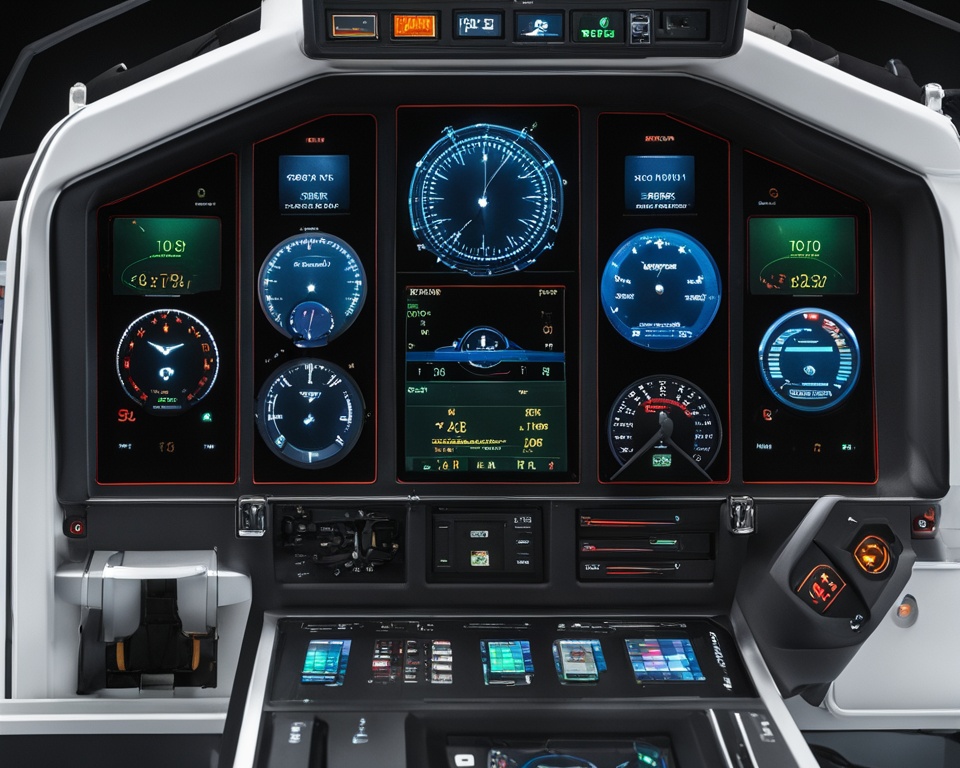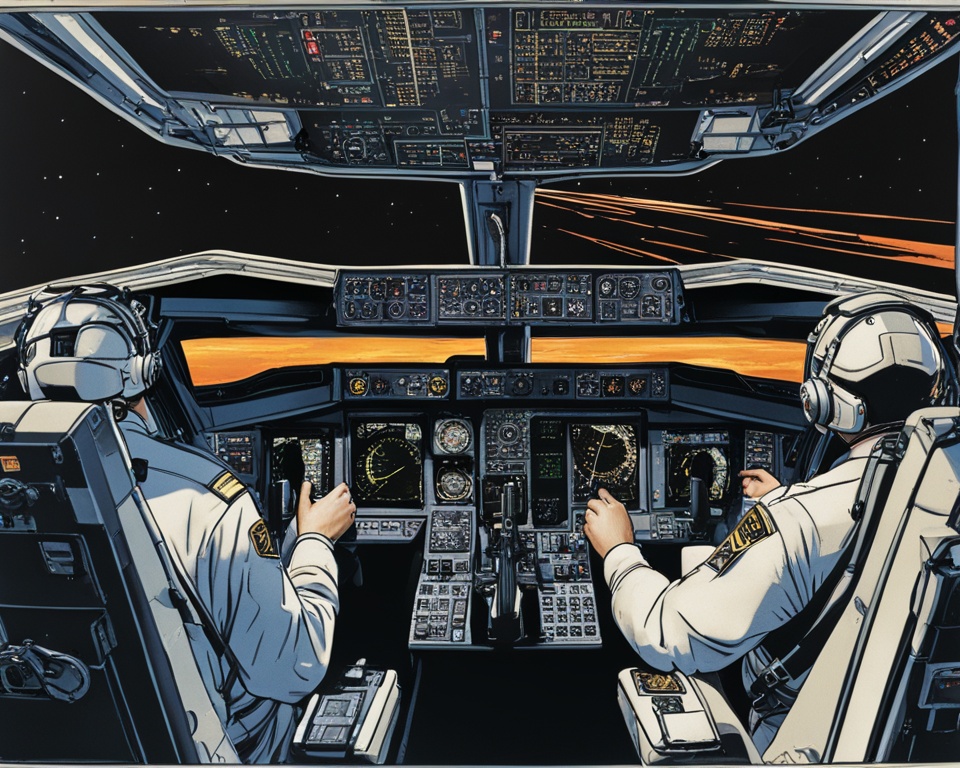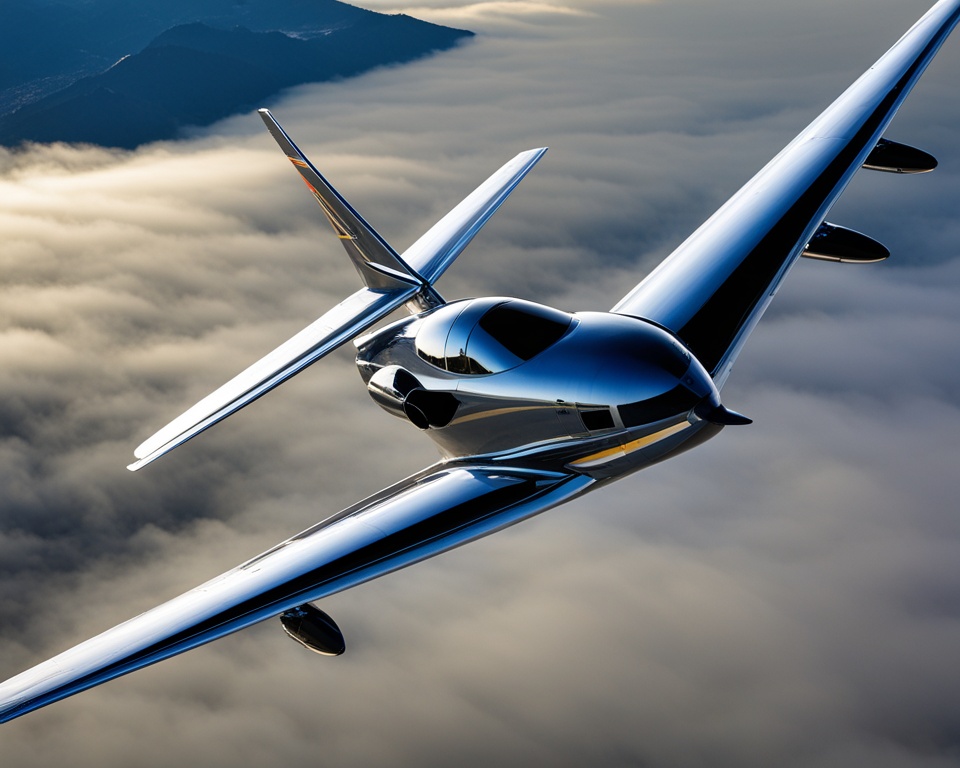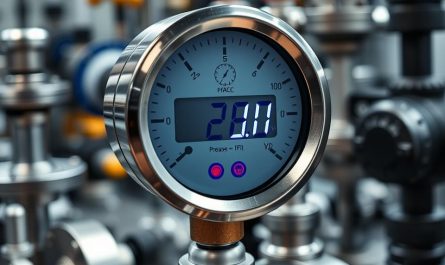The air travel world is changing fast, thanks to autopilot aviation. This new tech is making flying safer, more efficient, and smoother. It’s bringing in a new era of air travel that’s set to change everything.
At the core of this change is a deep dive into autopilot aviation. It’s packed with advanced features like automated flight control and smart algorithms. These tools aim to make flying better and safer for everyone.
Read interesting things at : grenzgamer
Key Takeaways
- Autopilot aviation is transforming the air travel industry with unprecedented levels of automation, safety, and efficiency.
- This technology encompasses advanced aircraft control systems, flight automation, and cutting-edge avionics.
- Autopilot aviation is redefining the flight experience through sophisticated auto-flight management and autopilot functionality.
- Comprehensive certification and training processes ensure the safe and effective implementation of autopilot systems.
- The future of autopilot aviation promises even greater advancements, with a focus on improving safety, reliability, and passenger experiences.
Understanding Autopilot Aviation
Autopilot aviation uses automated systems to fly a plane without needing a human pilot all the time. This technology makes flying safer, lowers pilot workload, and makes flights more efficient. Let’s dive into how autopilot aviation is changing the aviation world.
What is Autopilot Aviation?
Autopilot aviation means using automated systems for flying tasks like keeping the plane at the right height and direction. These systems are part of the aircraft’s technology. They help control the plane’s actions smoothly and precisely.
Benefits of Autopilot Aviation
Using autopilot aviation in flying has many perks. Some main benefits are:
- Increased Precision: These systems keep the flight steady and accurate, cutting down on mistakes and making flights smoother.
- Improved Fuel Economy: By managing flight settings better, autopilot systems help save fuel. This makes flying better for the environment.
- Enhanced Situational Awareness: Autopilot gives pilots up-to-the-minute info and alerts. This helps pilots understand the flight and their surroundings better, making decisions safer.
The future of flying will see more use of autopilot aviation, flight automation, and auto-flight management systems. They will shape how we travel in the air and improve autopilot functionality.
| Feature | Benefit |
|---|---|
| Increased Precision | Reduced risk of human error, smoother flight |
| Improved Fuel Economy | Significant fuel savings, more sustainable air travel |
| Enhanced Situational Awareness | Improved decision-making and safety for pilots |
Aircraft Control Systems
At the heart of autopilot aviation are aircraft control systems. They use sensors, computers, and actuators to control the flight. These systems keep track of the aircraft’s pitch, roll, and yaw. They make sure the flight stays on course, speed, and altitude, even when it’s tough.
These systems work together perfectly thanks to flight automation and avionics technology. This makes them work with amazing precision and reliability.
Aircraft control systems have many parts that work together to manage the flight. They use sensors to get data on the aircraft’s position and the environment. This includes things like altitude, airspeed, and weather.
Computers then use this info to make quick decisions. They adjust the aircraft’s controls to keep the flight steady and efficient.
The actuators in the system move the aircraft’s control surfaces. This can be the rudder, ailerons, or elevators. Together with sensors and computers, they help the aircraft follow its planned path, even with turbulence or other challenges.
The growth of aircraft control systems has changed autopilot aviation. These advanced systems give pilots more support and automation. This makes flying safer, more efficient, and more comfortable for everyone on board.
“The continuous evolution of aircraft control systems is essential for unlocking the full potential of autopilot aviation, ushering in a new era of seamless, technologically-empowered flight.”
Flight Automation: The Future of Aviation
The future of flying is closely tied to flight automation. From simple autopilot to advanced autonomous systems, the aviation world is quickly adopting automation. This move aims to boost safety, efficiency, and reliability. Let’s explore the levels of automation in aviation and the hurdles in bringing these new technologies to life.
Levels of Automation in Aviation
The path to fully automated flights is a journey with different automation levels. At the simplest, autopilot has been a key feature in modern planes, keeping the flight steady and adjusting settings like altitude. Now, with advancements, we see more complex auto-flight systems. These systems can make decisions on their own and even land planes without a pilot.
Challenges of Automation Implementation
Flight automation brings many benefits but also challenges. It’s crucial to ensure automated systems work well with human pilots. The balance between automation and human control must be just right. Also, ethical issues in emergencies and public trust in autonomous flying need to be tackled.
The aviation sector is making great strides in flight automation. By finding the right balance between tech and human skills, we can change air travel. This will bring a new era of safety, efficiency, and innovation with flight automation.
“The future of aviation is not about man versus machine, but about man and machine working in harmony to reach new heights of safety and efficiency.”
Avionics Technology: Enabling Autopilot Aviation
Avionics technology has greatly improved autopilot aviation. It includes flight management computers, navigation aids, and flight control actuators. These systems work together to make autopilot flying precise and reliable.
The flight management computer (FMC) is key to autopilot flying. It uses sensors and systems to control the flight path and navigation. The FMC’s advanced algorithms and power make autopilot functionality smooth, including autopilot modes and auto-flight management.
GPS and inertial navigation systems give the FMC accurate location and speed data. This info helps the autopilot functionality keep the plane on course and at the right height. This makes flying smooth and efficient.
Advances in avionics technology have also improved flight control actuators. These actuators carry out the autopilot’s commands. With the FMC’s precise control, planes can fly steadily and accurately, even in tough weather or during tricky moves.
As avionics technology gets better, autopilot flying will get even more reliable, efficient, and safe.
Auto-Flight Management Systems
Auto-flight management systems are key to autopilot aviation. They bring together different parts to control and navigate the aircraft. These systems are behind the big leaps in making flying planes easier today.
Components of Auto-Flight Management
These systems have three main parts that work together to guide the plane through flight:
- Flight Management Computers (FMCs): These are advanced computers on the plane. They handle navigation, flight planning, and guidance. This ensures the plane flies smoothly and efficiently.
- Autopilot Controllers: These units take the FMC’s orders and make the plane follow the right path and height.
- Automatic Thrust Control Systems: These systems change the engine power to keep the right speed and save fuel. They work well with the autopilot.
Together, these parts use smart algorithms and sensor data. They give pilots a full auto-flight management system. This makes flying safer, more efficient, and helps pilots know what’s happening in the air.
| Component | Function |
|---|---|
| Flight Management Computers (FMCs) | Manage navigation, flight planning, and guidance systems |
| Autopilot Controllers | Translate FMC instructions into precise control inputs |
| Automatic Thrust Control Systems | Automatically adjust engine thrust to maintain desired airspeed and fuel efficiency |
“Auto-flight management systems are the backbone of modern autopilot aviation, seamlessly integrating various technologies to enhance safety, efficiency, and the overall flight experience.”
Autopilot Functionality and Modes
Modern aircraft have advanced autopilot systems with many features. These systems help pilots in different flight situations. They offer tools to make flying safer, more efficient, and easier to manage.
Primary Autopilot Modes
The main autopilot modes are key to aircraft automation. They include altitude hold, which keeps a set altitude, heading select, for choosing a direction, and vertical speed control, which controls climb or descent rates. These modes help pilots keep the plane stable and predictable, making flying easier during routine tasks.
Advanced Autopilot Modes
Autopilot technology has grown, adding new modes for safety and better flying. These include coupled approaches for guided landings, auto-land for fully automated landings, and emergency descent for fast descents in emergencies. These features let pilots focus on big decisions and monitoring, while the autopilot does the precise flying.

Autopilot functionality, modes, and operation have changed how planes fly. They make flying safer and more efficient. As technology gets better, autopilot systems will keep getting more advanced, changing aviation’s future.
Autopilot Operation and Procedures
Using autopilot systems in aircraft requires specific steps and rules. Pilots must know how to turn the autopilot on and off, check its work, and act on alerts. They need thorough training and a certification to use these high-tech tools safely.
Turning on the autopilot is a key part of flying. Pilots must go through a checklist to make sure it’s set right. They check the flight modes, set the altitude and speed, and make sure the plane is steady before starting the autopilot.
After starting the autopilot, pilots keep an eye on how it’s doing. They compare the plane’s flight details with what the autopilot says. They’re ready to stop the system if something goes wrong or if there’s an unexpected issue.
Knowing how to use autopilot correctly is key for safe and efficient flying. Pilots must be certified in using these systems. They also need regular training to keep their skills sharp.
“The proper use of autopilot systems is a critical component of modern aviation, allowing pilots to focus on higher-level tasks while ensuring the safe and efficient operation of the aircraft.”
By following the right steps for autopilot operation, pilots can use these technologies to improve safety, lessen their workload, and make the plane perform better.
Autopilot Certification and Regulations
Autopilot systems in aviation go through strict checks and rules. Makers, suppliers, and airlines must follow high safety standards. This makes sure autopilot tech is safe and reliable.
The Federal Aviation Administration (FAA) and other aviation groups set rules for autopilot systems. These rules make sure autopilot tech is safe and works well. This gives pilots and passengers confidence during flights.
When making autopilot systems, manufacturers go through a detailed check. This includes:
- Design and engineering reviews to check if the system is safe and works right
- Testing on the ground and in the air to make sure it’s reliable and performs well
- Showing it meets all the rules, like safety standards and airworthiness directives
- Keeping an eye on the system and maintaining it to keep it safe over time
Airlines and operators have strict rules for using autopilot systems. They also provide thorough training for pilots. This training helps pilots know how to use, manage, and override the autopilot at any time.
| Certification Requirement | Description |
|---|---|
| Autopilot Certification | Rigorous testing and validation to ensure the autopilot system meets safety and performance standards |
| Autopilot Operation | Strict protocols and procedures for the use of autopilot systems by airlines and flight crews |
| Autopilot Training | Comprehensive training for pilots to ensure they can effectively monitor, manage, and, if necessary, override the autopilot |
These strict rules and checks make sure autopilot tech keeps making flying safer, more efficient, and reliable.
Autopilot Training for Pilots
The aviation world is getting more advanced with autopilot tech. So, pilots need to learn a lot about autopilot. They must understand how it works, its different modes, and how to use it with their own skills.
Importance of Autopilot Training
Good autopilot training is key for pilots. It teaches them how to handle modern flight’s challenges. They learn about:
- Understanding autopilot operation and its modes
- Working well with autopilot systems and manual controls
- Checking on autopilot and fixing problems if it fails
- Following autopilot certification rules and guidelines
This training helps pilots use autopilot tech to make flying safer and more efficient. It also improves how they manage the plane.
“Comprehensive autopilot training is essential for pilots to effectively utilize these advanced technologies in flight.”
Adding autopilot training to pilot school makes sure pilots can handle new aviation tech. This way of teaching is key for keeping flying safe and top-notch.

Autopilot Aviation: Safety Considerations
The safety of autopilot aviation is very important. It’s key to make sure aircraft control systems and autopilot functionality work well and reliably. This keeps flights safe. Testing, certification, and constant checks of these systems are vital to reduce risks and keep passengers safe.
Pilots are crucial for autopilot aviation safety. They need to be well-trained to stay alert and ready to take control if needed. Regular training helps pilots handle unexpected situations and system problems well.
| Key Safety Considerations in Autopilot Aviation | Importance |
|---|---|
| Robust Certification and Regulatory Oversight | Ensures comprehensive testing and compliance with the highest safety standards |
| Continuous Monitoring and System Upgrades | Proactively identifies and addresses potential issues, enhancing system reliability |
| Comprehensive Pilot Training and Skill Maintenance | Empowers pilots to maintain active control and safely intervene when required |
Putting safety first in autopilot aviation makes flying safer and more reliable. This builds trust with travelers. It also sets the stage for a future of smooth, secure air travel.
“The safety of our passengers is our highest priority, and we are committed to ensuring that our autopilot aviation systems meet the most rigorous safety standards.”
Autopilot Aviation: Impact on Airlines
The use of autopilot aviation has changed the airline industry a lot. It has made things run smoother and made flying better for passengers. Airlines have jumped on board with flight automation and auto-flight management systems. This has brought big benefits.
One big plus of autopilot functionality is it cuts down on fuel use. Airlines use autopilot operation to plan better flight paths. This means less fuel is used, which saves money and is better for the planet.
Also, autopilot aviation has made flights run on time more often. It keeps the plane at the right speed and altitude. This means flights don’t get off track, making schedules more reliable. It’s good for airlines and passengers alike.
Passengers also enjoy flying more with autopilot aviation. The flights are smoother, thanks to autopilot functionality. This means less shaking and a more comfortable ride. It makes flying more pleasant and reduces complaints.
The airline industry is still seeing the big benefits of autopilot aviation. It’s making things more efficient, saving money, and making flying better for everyone.
“The adoption of autopilot technology has been a game-changer for the airline industry, unlocking new levels of efficiency and enhancing the overall flying experience for our passengers.”
Future Developments in Autopilot Aviation
The aviation world is always changing, and the future of autopilot aviation is looking bright. New tech in artificial intelligence, machine learning, and sensors is making autonomous flight systems better. This means we could see more safety, efficiency, and easy access to flying in the future.
For autopilot aviation, the focus is on smarter and more flexible flight automation systems. These systems will use top-notch avionics technology to give pilots better control and make flying smoother. They will help pilots switch between flying by hand and flying automatically easily.
Also, there’s talk about autonomous aircraft that fly on their own. These planes could change how we see autopilot functionality. They could make flying safer, cut costs, and open up air travel to more people and goods.
As these techs grow, the aviation world will have to tackle ethical and regulatory challenges with autopilot aviation. Questions about who is responsible, privacy, and how these new systems fit into current air traffic rules will need answers. This will help make sure these new flying tools are safe and right for everyone.
“The future of autopilot aviation is not about replacing pilots, but about empowering them with the tools and technology to operate more safely, efficiently, and confidently than ever before.”
The future of autopilot aviation is full of chances to make flying better for everyone. As we keep exploring new tech, we could see a future where flying is smoother, more reliable, and open to more people.
Conclusion
Autopilot aviation has changed how we fly. It brings together advanced aircraft control systems and top-notch avionics technology. This makes flying safer, more efficient, and better for everyone on board.
Now, auto-flight management and autopilot technology are changing how we fly. They’re starting a new chapter in air travel. This change is making flying smoother and more reliable.
The aviation world is always looking to improve. The future of autopilot aviation looks bright. It will focus on making flying safer, more reliable, and more comfortable for everyone.
With ongoing improvements in flight automation and autopilot rules, the future is exciting. We can expect more innovation in this field. This means flying will stay safe, efficient, and enjoyable for everyone.



